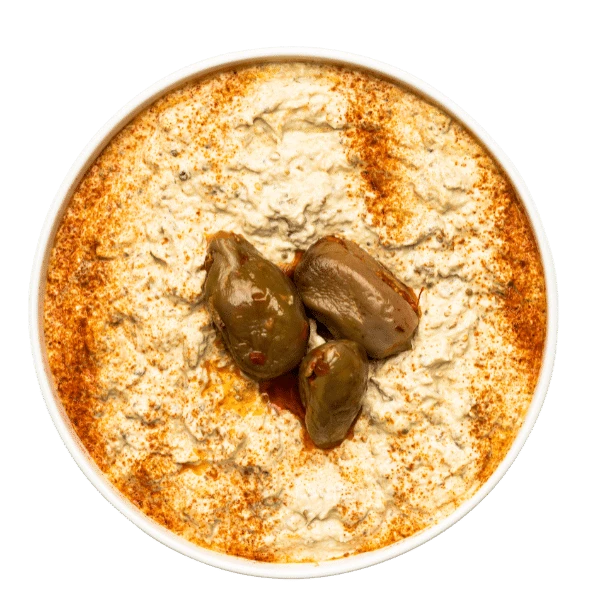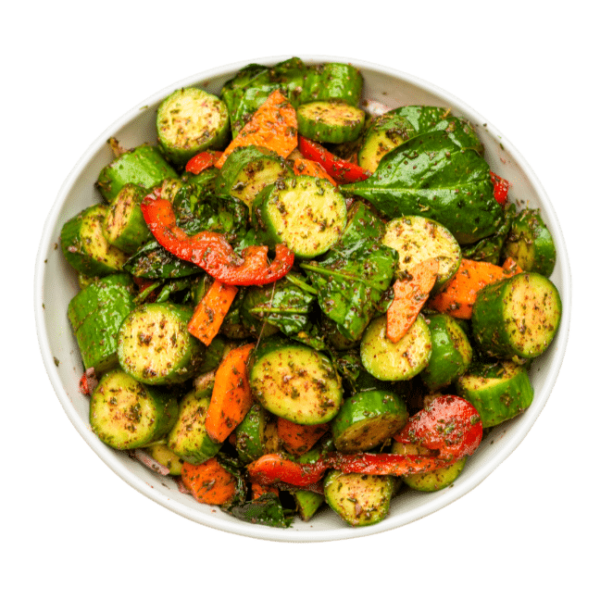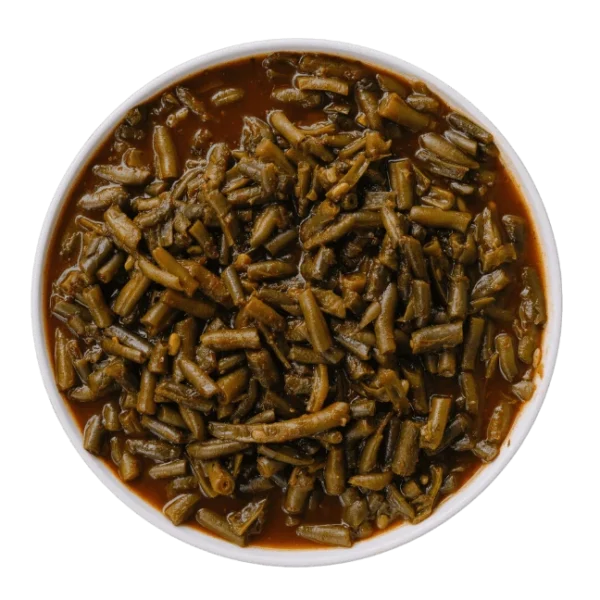Houston has a talent for letting cuisines from faraway coasts feel at home. Mediterranean food thrives here because the city understands the rhythm of shared plates, the clean crunch of good olive oil, and the way a grill should treat lamb or octopus. Walk through any neighborhood inside the Loop and you’ll find a hummus that tastes subtly different from the one a mile away. Some kitchens lean Levantine, others Greek, Turkish, or North African, and many blend influences that make sense on a plate. If you’ve searched “mediterranean food near me” after a long day and ended up across a table covered in mezze, you already know how welcoming Houston’s version of the Mediterranean can be.
What makes Mediterranean in Houston special
Two forces shape Mediterranean cuisine in this city. The first is a deep diaspora of Lebanese, Palestinian, Greek, Persian, Turkish, and North African families who built restaurants that feel like living rooms. They brought pantry staples that matter, like Aleppo pepper, preserved lemon, wild thyme, sumac, and sheep’s milk yogurt. The second is Houston’s produce and Gulf access. A chef here can get herbs that still taste of the garden, tomatoes the color of a summer sunset, and fish from the dock within hours. That combination means the classics show up bright, not muddy, and grills stay busy all day.
There is range. You’ll find counter-service shawarma joints that turn out perfect weekday lunches and white-tablecloth rooms where octopus gets the royal treatment. A few places push the envelope, riffing on staples with Texas ingredients, from pecan dukkah to brisket-stuffed pita. You can eat widely across the Mediterranean map in a single weekend if you pace yourself.
The essentials: what to expect on the table
Order smart, and you’ll cover the greatest hits without wasting appetite. A baseline mezze spread in Houston often includes silky hummus, labneh drizzled with olive oil, mutabbal or baba ghanoush with wood-smoke whispering at the edges, and something briny for contrast, like olives or pickled turnips. Fresh-baked pita is nonnegotiable. If you’ve only known it from a plastic bag, the first warm tear of house-baked bread will reset your expectations.
From there, think about your mood. Do you want char from a grill, or the slow warmth of braise and spice? Many kitchens do both well. Grilled chicken thighs marinated in lemon and oregano, lamb kebabs with a rosy center, and kifta shaped by hand are common strengths. On the gentler side, you might find stuffed grape leaves, long-simmered white beans with tomatoes, or Lebanese rice dotted with toasted vermicelli. Seafood is often a standout when a restaurant respects local catch. I’ve had snapper crudo slicked with lemon and coriander that belonged at a beachside taverna.
Dessert deserves attention. Houston’s Mediterranean sweet spots treat baklava as a craft, not a sugar bomb. The best versions ring with pistachio and orange blossom, the phyllo staying crisp until the last bite. Don’t overlook muhallabia, rice pudding, or knafeh, especially when it arrives bubbling, the cheese elastic, the syrup fragrant with rose or orange.
A neighborhood guide to Mediterranean Houston
The city’s sprawl hides clusters of excellence. A practical way to eat your way through the best mediterranean food Houston offers is by mapping cravings to neighborhoods.
Montrose remains a reliable hub for date-night rooms with thoughtful wine lists and mezze that could stand alone as a meal. Here, Greek-leaning menus often share space with Levantine touches, so you can go from saganaki to fattoush without blinking. The service culture tends to be seasoned, and the olive oil on your table probably has a story.
Rice Village and West University skew toward family-friendly spots that understand weeknight logistics. Rotisserie chickens scented with sumac, generous salads, and grilled skewers land quickly, and the staff keeps a sharp eye on refills. This is where you can walk in with kids, order a spread of recognizable dishes, and leave everyone happy.
The Energy Corridor and Westchase host an array of Middle Eastern and Mediterranean counters where you’ll eat very well for not much money. If you want a classic plate with beef shawarma, garlicky toum, turmeric rice, and a cucumber-tomato salad, you’ll find three options in a single strip center. Competition helps. Garlic sauces stay bright, and meat turns evenly on the spit.
The Heights mixes modern design with old soul. Expect natural wood, open kitchens, and menus that read like travel diaries. I’ve eaten grilled halloumi with blistered grapes here that made me rethink simplicity, then followed with a clay-pot lamb that tasted like someone’s grandmother guarded the recipe.
Midtown and Downtown, meanwhile, have leveled up lunch for office crowds. Fast-casual spots layer bowls with saffron rice, herb salads, roasted vegetables, and protein cooked to order. If you’re searching “mediterranean near me” within a few blocks of a high-rise, your odds of landing a satisfying, balanced meal are better than good.
A plate-by-plate tour: what to order where
If you care about hummus the way some people care about espresso, you learn to judge quickly. The best hummus in Houston shows a sheen of good olive oil, a squeeze of lemon, and a subtle tahini backbone. It should taste of chickpeas first, not garlic. Ask if the kitchen cooks chickpeas from dried rather than using canned. Most of the top kitchens do. When the answer is yes, you’ll likely get that delicate, almost sweet nuttiness that turns a simple dip into something you find yourself defending with your spoon.
Grilled meats test a restaurant’s patience. For chicken, I look for char that doesn’t penetrate too far into dryness. Greek-leaning spots often marinate with oregano, garlic, and lemon. Levantine kitchens might favor seven-spice blends with cinnamon and allspice. If lamb is on the menu, order it medium to keep it tender. Kifta kebab should hold together but crumble at the touch of a fork, with a balance of parsley, onion, and spice.
Seafood can be the sleeper hit. Gulf shrimp in a saganaki-style preparation with tomatoes and feta works brilliantly, as does grilled branzino finished with lemon and capers. Octopus is a litmus test. The proper bite takes a long simmer or sous-vide before a scorching sear. When done right, it tastes like the sea and smoke got married.
Salads matter more than they get credit for. Fattoush hinges on bread fried or toasted at the last minute so it stays crunchy, and the dressing needs enough sumac to brighten. Tabbouleh shouldn’t taste like bulgur with herbs; it should be herbs first, with bulgur playing a supporting role. Greek salad improves with ripe tomatoes and properly brined feta. You can tell a kitchen’s priorities in how they salt cucumbers.
Sauces are the bridge. Toum should be white, fluffy, and fierce, with the heat of raw garlic blooming then fading. Tzatziki should taste of strained yogurt and grated cucumber, not sugar. Harissa varies widely, from smoky to nose-clearing. Ask for a taste if the kitchen is proud of theirs.
For the seeker: how to spot quality quickly
When you walk into a mediterranean restaurant near me, a few details reveal the kitchen’s discipline. Look at the pita. If it emerges from an oven in the dining room or arrives so warm it steams when torn, you’re in good hands. If it’s pre-cut, room temperature, and slightly leathery, temper expectations.
Scan the mezze menu. A short list that changes with the season often signals care. A long list isn’t always a red flag, but many kitchens do better with focus. If tomatoes are out of season and the kitchen still builds a salad around them, maybe steer toward cooked vegetables instead.
Listen to the grill. You should hear a steady hiss and pop during busy hours. Meat smells like a promise fulfilled when handled well over flame. Ask about their olive oil. This isn’t pretension. The difference between a generic blended oil and a robust single-origin Greek or Palestinian oil shows up in every bite.
The Lebanese backbone: where Houston shines brightest
If someone asks where to start with mediterranean cuisine Houston offers, I often point to a lebanese restaurant Houston locals have loved for years. Lebanese cooking shows the breadth of the region in a single menu, from raw preparations like kibbeh nayyeh to hearty stews and charcoal-grilled meats. It handles vegetables with empathy. I’ve eaten fattoush here in midsummer when the mint was so fresh it took the lead.
At the better Lebanese spots, look for sujuk and makanek if you like spiced sausages, and say yes to anything with pomegranate molasses. If they make their own pickles, you’ll taste it immediately. A plate of turnips that glow magenta from beet brine can lift half the menu.
Many of these restaurants also run quietly excellent bakeries. Spinach fatayer, cheese manakeesh hot from the oven, and sesame-studded kaak soften even a tough day. If you’re building a spread at home, add these breads to your order. They travel well and reheat easily at 350 degrees for a few minutes.
Greek, Turkish, and beyond: the spectrum of style
Greek kitchens in Houston do justice to restraint. Good Greek food here tastes clean and olive-forward, with oregano that carries a wild edge. Order simple grilled fish, lemon potatoes, and horiatiki. The desserts lean to honey and walnut. Baklava here sometimes lands a touch sweeter than Levantine versions. If a server mentions a resinous spirit or a small-production Greek wine, take the nudge.
Turkish menus showcase mastery with dough and fire. Pide shaped like little boats come loaded with spiced lamb or cheese, and lahmacun arrives paper-thin, ready to be rolled with herbs and lemon. Doner here benefits from precise slicing and a final kiss on the griddle. If you see çiğ köfte, check whether it’s the modern bulgur version or a raw-meat traditional take, and choose according to your comfort.
North African influences surface in tagines, preserved lemon accents, and ras el hanout spice blends. These dishes warm rather than sear. Carrots soften in cumin perfume, chickpeas hum under saffron, and lamb falls from the bone into its own sauce. Couscous should be fluffy, never gummy. A good kitchen will steam it more than once.

Persian kitchens sometimes get grouped into the Mediterranean umbrella by diners searching “mediterranean food houston,” and while the geography and traditions differ, the Houston dining scene often places them side by side. If your favorite mezze spot is next door to a Persian grill, consider making a two-stop evening of it. Order mast-o-khiar and a skewer of jujeh kabob on one side, then cross the hallway for knafeh.
Where value meets craft: lunch strategies
If you work Downtown or in the Medical Center, fast-casual bowls have made lunch civilized again. The trick is balancing richness and freshness. Start with a base of herbed rice or mixed greens. Add roasted vegetables, then choose a protein with contrast. Falafel gives crunch and an herby center if fried to order. Chicken shawarma makes sense if you see it turning on a spit rather than sitting in a steam table. Finish with pickles, olives, and a squeeze of lemon. Ask for toum or tahini on the side, not drenched, so you control the bite.

For a little more time, mezze lunches in Montrose feel like a midday exhale. Share three plates for two people. Hummus, a cooked vegetable like stewed green beans with tomato, and a grilled item cover temperature, texture, and protein. Add a glass of something mineral. You return to the afternoon far happier than a sad desk sandwich could manage.

Dining with dietary preferences
Mediterranean cuisine does right by varied diets. If you’re plant-forward, you can build a feast from mezze alone. Hummus, baba ghanoush, muhammara, gigante beans in tomato, tabbouleh, and roasted cauliflower dressed in tahini form a complete meal. Confirm how falafel is fried, as some kitchens share fryers with meat items.
Gluten-free diners should be fine with rice pilafs, grilled meats, salads without croutons or fried pita, and most braises. Ask about flour in meatballs or kebabs. A few kitchens add breadcrumbs. For dairy-free eating, avoid labneh, tzatziki, and certain desserts, but plenty of options remain. Olive oil, lemon, and herbs do heavy lifting.
If you keep halal, many Mediterranean restaurants in Houston source accordingly. Call ahead or check the menu notes. Staff usually know the details and answer clearly.
Catering and feeding a crowd
Mediterranean catering Houston families rely Aladdin catering services on tends to scale well because the cuisine loves room temperature. Hummus, salads, and stuffed vegetables hold beautifully. Grilled meats stay tender if wrapped properly and delivered in warmers. A practical ratio is roughly one pound of protein for every three to four guests when paired with plenty of sides and bread. Add more if teenagers are involved or if the gathering stretches past two hours.
For a balanced spread, plan on a dip trio, two salads, one vegetarian entrée or hearty side, a meat option, rice, and bread. Dessert should be finger-friendly. Baklava trays disappear quickly. If you want to impress, include a citrusy semolina cake or mini maamoul.
The little details that elevate a meal
Good olive oil is the north star. The best mediterranean restaurant Houston can boast is usually the one that cares about oil quality as much as salt. When the server sets down a small bottle, taste a drop on your wrist. If it sings, you’re in the right place. Fresh herbs make everything better. Look for mint that hasn’t blackened, parsley chopped close to the minute, and dill that still reads as bright.
Heat management matters. The region’s spice blends often rely on warmth rather than fire. If you want more spice, ask for Aleppo pepper or a side of harissa. A good kitchen will oblige, and the flavors stay balanced.
Bread should be treated like a course. Ask for a second round only when you need it, so it arrives hot. Use it to mop sauces with intention rather than filling up early.
Two quick field notes for your next search
- If you’re searching “mediterranean restaurant near me” or “mediterranean restaurant Houston TX” and choosing between two places, call and ask one question: do you bake your pita in-house daily? Pick the one that says yes. For “best Mediterranean food Houston” lists, cross-check photos for grill marks and the color of toum. Clean grill sear and snowy toum rarely steer you wrong.
Service, pacing, and the Houston factor
Houston service culture rarely rushes you off the table unless the room is heaving, but Mediterranean dining has its own rhythm. Mezze arrives quickly, mains follow once the table relaxes. If you want everything at once, say so at the beginning. Otherwise, settle in. Some of the most memorable meals happen when you let the kitchen set the pace and share plates as they land.
BYO policies vary. A few smaller restaurants allow it for a fee, which can make a Greek island white or a Lebanese red from your own cellar a smart move. Ask respectfully, and tip with that in mind.
Parking is the city’s tax on good eating. Montrose can be tight on weekends. The Heights is friendlier but fills fast during dinner rush. Plan a few extra minutes, or treat the stroll as part of the evening.
Price, value, and when to splurge
A solid sit-down mezze-and-grill dinner for two usually lands in the 45 to 80 dollar range before drinks, depending on the room and your appetite. Fast-casual bowls and wraps hover around 12 to 18 dollars. Splurge-worthy experiences include whole grilled fish, octopus, or mixed-grill platters that let you compare marinades and cuts in one go. If the restaurant offers a chef’s selection of mezze, that is often the best way to taste the kitchen’s point of view.
Wine by the glass programs have improved. Look for Assyrtiko, Xinomavro, Lebanese blends from the Bekaa Valley, and Turkish Kalecik Karası. These wines match the cuisine’s herb-driven profile better than heavy New World reds. If beer is your lane, a crisp pilsner or a slightly bitter pale ale does deft work with garlic and lemon.
At-home enthusiasts: how to extend the experience
Once you fall for this cuisine, you start keeping the right staples. A tin of great olive oil, sumac, za’atar, tahini, and a jar of preserved lemons turns simple produce into dinner. Houston’s Mediterranean markets carry everything you need, from sheep’s milk feta packed in brine to hand-rolled grape leaves. Pair a market run with a restaurant meal, then recreate a few favorites at home. You gain appreciation for the work behind a perfect kebab when you try shaping kifta yourself.
For a quick weekday win, roast cauliflower at high heat, toss with tahini, lemon, and chopped parsley, and serve with warm pita and store-bought hummus upgraded with a drizzle of your best oil and a dusting of Aleppo pepper. On weekends, tackle a tagine or a slow braise. The house will smell like a holiday.
Final bites: why Houston keeps winning at Mediterranean
The city’s strengths match the cuisine’s values. Diversity, generosity, and a respect for ingredients guide the best kitchens. You can eat well at 12 dollars or 120, guided by the same fundamentals: fresh herbs, lively acid, a confident grill, and olive oil that earns its keep. Whether you’re chasing “mediterranean food near me” on your phone at lunch or booking a table for an occasion dinner, the options deliver.
Mediterranean Houston isn’t a single story. It’s a mosaic made up of Greek tavernas with grilled octopus as tender as a promise, lebanese restaurant Houston landmarks where the toum lifts you out of a mood, Turkish bakeries shaping pide with clockmaker precision, and North African pots that quiet a room when the lid lifts. If you measure a city by what it does with lemon, garlic, and fire, Houston is in fine form.